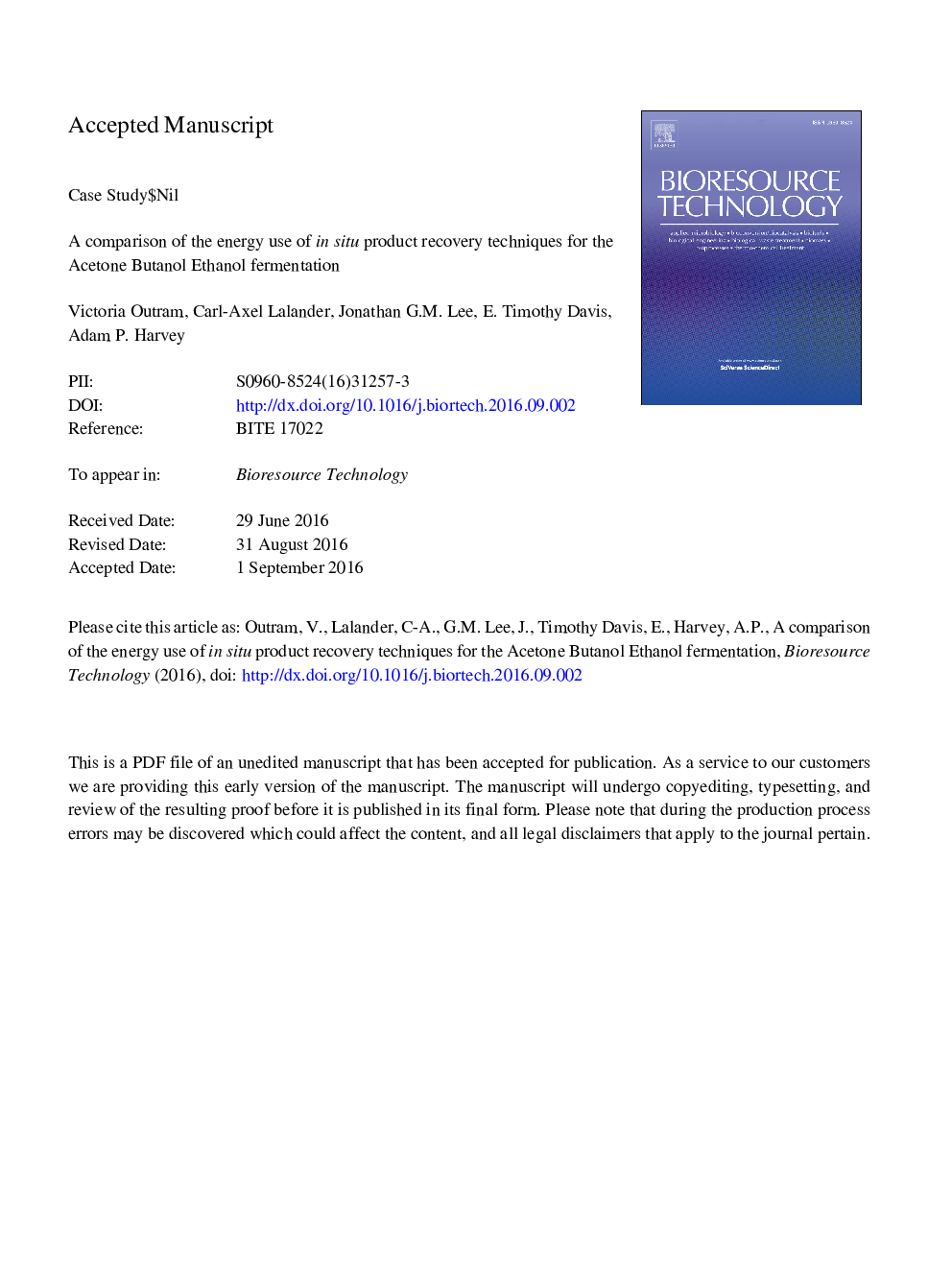| Article ID | Journal | Published Year | Pages | File Type |
|---|---|---|---|---|
| 7069773 | Bioresource Technology | 2016 | 34 Pages |
Abstract
The productivity of the Acetone Butanol Ethanol (ABE) fermentation can be significantly increased by application of various in situ product recovery (ISPR) techniques. There are numerous technically viable processes, but it is not clear which is the most economically viable in practice. There is little available information about the energy requirements and economics of ISPR for the ABE fermentation. This work compares various ISPR techniques based on UniSim process simulations of the ABE fermentation. The simulations provide information on the process energy and separation efficiency, which is fed into an economic assessment. Perstraction was the only technique to reduce the energy demand below that of a batch process, by approximately 5%. Perstraction also had the highest profit increase over a batch process, by 175%. However, perstraction is an immature technology, so would need significant development before being integrated to an industrial process.
Related Topics
Physical Sciences and Engineering
Chemical Engineering
Process Chemistry and Technology
Authors
Victoria Outram, Carl-Axel Lalander, Jonathan G.M. Lee, E. Timothy Davis, Adam P. Harvey,
